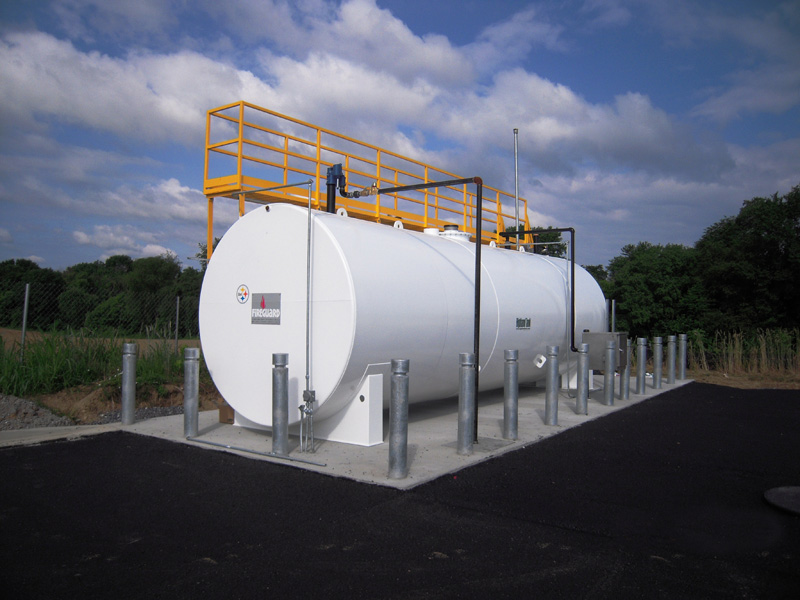When storing fuel and other hazardous materials in an aboveground storage tank, it is crucial that owners take precautionary measures to prevent contamination with groundwater sources. As little as one pint of oil can contaminate an acre of water, causing serious and long-term damage to local ecosystems. Federal regulations under 40 CFR Part 112 outline requirements that all AST owners must adhere to in order to prevent contamination: learn more about those regulations and what else you can do to prevent water contamination in today’s blog.

Aboveground Storage Tank Basics: Preventing Water Contamination
Secondary Containment
All aboveground storage tanks must include a secondary containment area in order to keep spills minimized and allow for easier leak detection. This containment area must be large enough to handle 110% of the capacity of the largest tank’s contents plus freeboard for precipitation. A manual sump pump must be installed in the secondary containment area to prevent rainwater accumulation and this water should be inspected for oil, petroleum, and other contaminants before being properly disposed of. Furthermore, the lining of the secondary containment area must be impermeable to the materials stored therein. Depending on permeability, your secondary containment area may need to be checked more frequently to ensure no degradation in quality. Lastly, standard tank filling practices should be followed to avoid overfills and spillage.
Inspection
After installation of a new unit, a qualified engineer should be brought in to audit the unit and ensure proper installation. The engineer will check for issues such as loose fittings, improper welding, and poorly fitted gaskets and correct any problems that are present. The unit should then be periodically inspected to ensure it’s in good working order, even if there are no visible warning sign. Important areas to inspect include the foundation of the tank, connections, coatings, and tank walls. In addition, integrity testing conducted by a qualified technician should be done periodically.
Beyond the Federal requirements, it is wise to implement additional prevention measures to avoid groundwater contamination.
Location
When considering a location for an aboveground storage tank, it is important to think about the proximity of natural waters such as drinking water wells, ponds, storm or sanitary sewers, and wetlands. Owners should take into account distance, weather conditions, soil conditions, and volume of materials stored when deciding where to install their tank.
Corrosion Control
Corrosion can quickly lead to leaks or worse so preventing it from occurring in the first place is of tantamount importance. Options to consider include installing a tank on concrete slabs, investing in a double-walled storage tank model, and elevating the tank.
Preventive Cleanup
Over time, minor spills can accumulate into a sheen on collected rainwater which then cannot be released into soil or drains. Sweeping the containment area periodically and limiting the use of absorbents can help prevent accumulation.